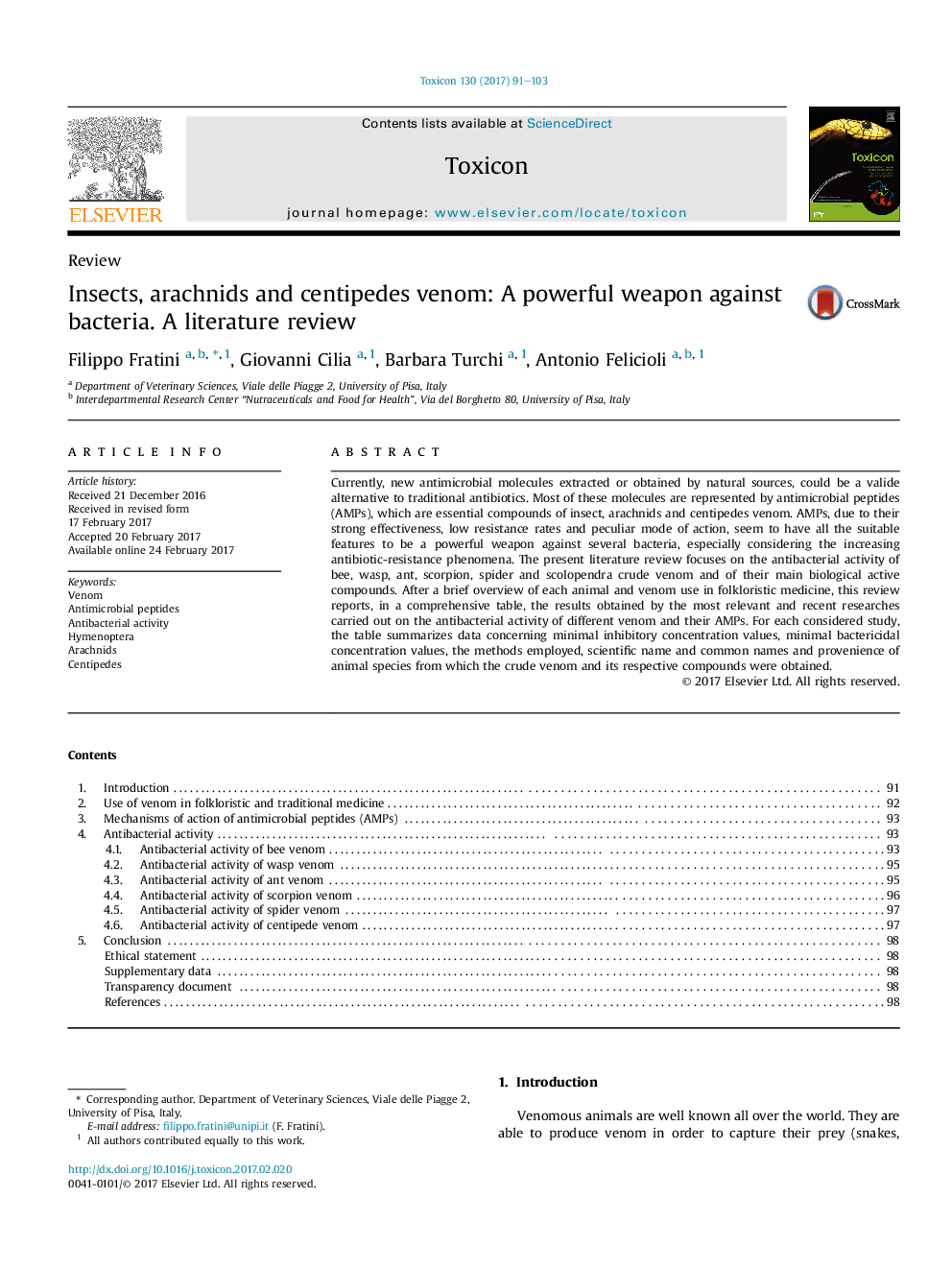| Article ID | Journal | Published Year | Pages | File Type |
|---|---|---|---|---|
| 5519303 | Toxicon | 2017 | 13 Pages |
Currently, new antimicrobial molecules extracted or obtained by natural sources, could be a valide alternative to traditional antibiotics. Most of these molecules are represented by antimicrobial peptides (AMPs), which are essential compounds of insect, arachnids and centipedes venom. AMPs, due to their strong effectiveness, low resistance rates and peculiar mode of action, seem to have all the suitable features to be a powerful weapon against several bacteria, especially considering the increasing antibiotic-resistance phenomena. The present literature review focuses on the antibacterial activity of bee, wasp, ant, scorpion, spider and scolopendra crude venom and of their main biological active compounds. After a brief overview of each animal and venom use in folkloristic medicine, this review reports, in a comprehensive table, the results obtained by the most relevant and recent researches carried out on the antibacterial activity of different venom and their AMPs. For each considered study, the table summarizes data concerning minimal inhibitory concentration values, minimal bactericidal concentration values, the methods employed, scientific name and common names and provenience of animal species from which the crude venom and its respective compounds were obtained.
